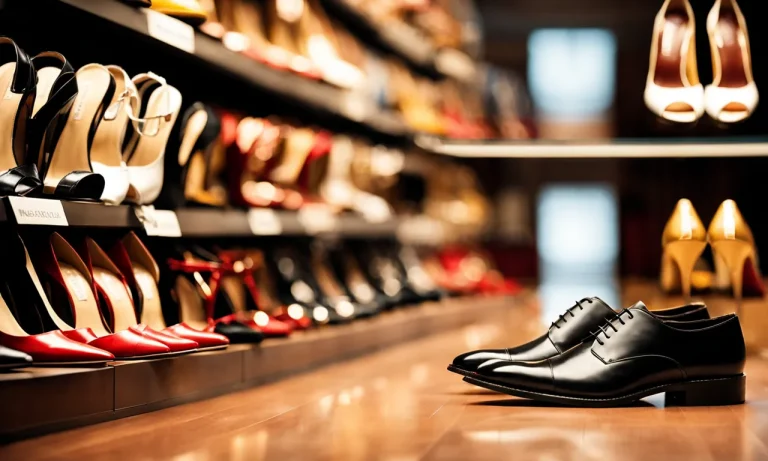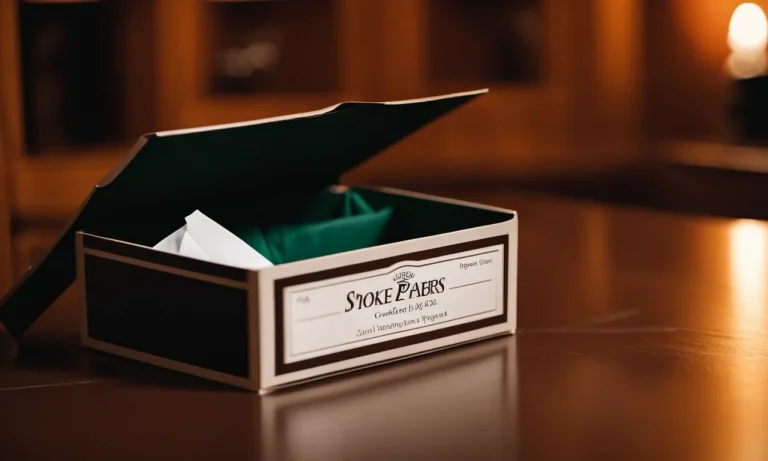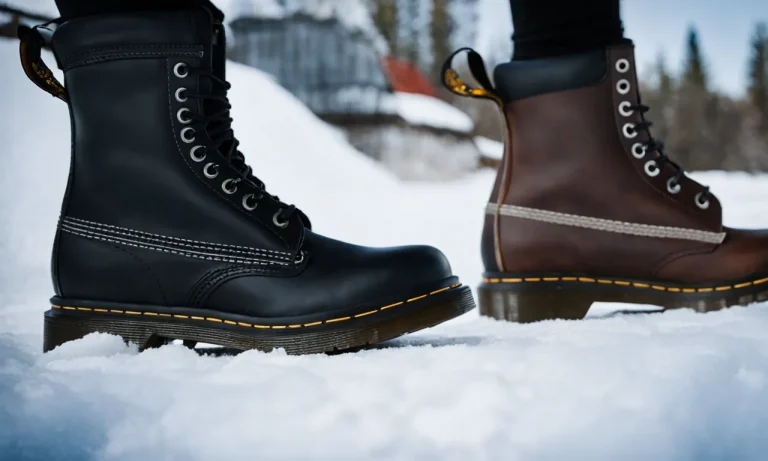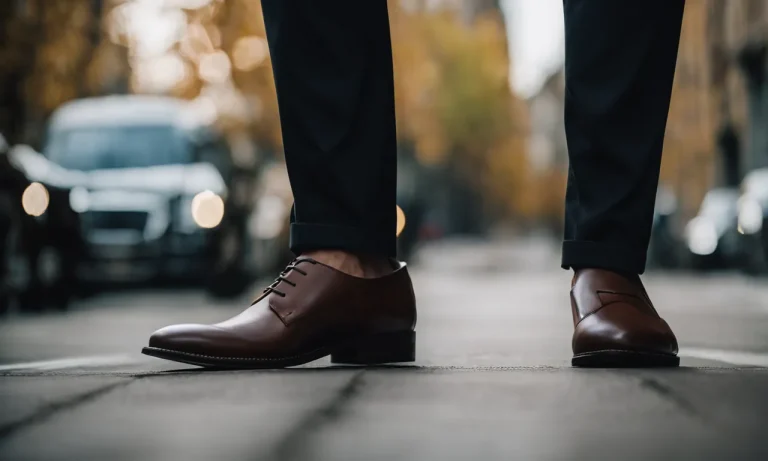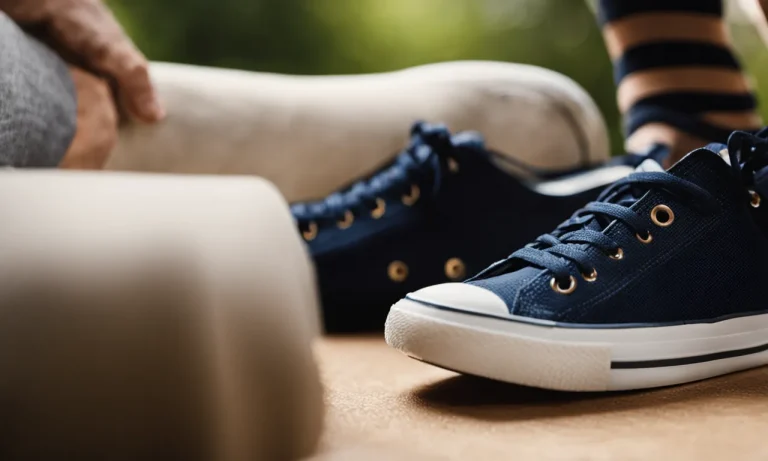Suede boots are versatile, stylish footwear that can complement both casual and dressy outfits. But with their soft, napped finish, many wonder if suede boots can withstand wet weather or will become stained at the first sign of rain.
If you’re short on time, here’s a quick answer: Generally speaking, suede boots are not waterproof and can become damaged if exposed to rain or snow. However, there are products available that can help protect suede and make it more water-resistant.
In this comprehensive guide, we’ll cover everything you need to know about the waterproof properties of suede boots. We’ll discuss how suede reacts to moisture, look at methods for waterproofing suede boots, and provide tips for cleaning and caring for suede footwear.
The Properties of Suede Make it Vulnerable to Water Damage
Suede, known for its soft and luxurious texture, is a type of leather made from the underside of animal hides. While suede offers a stylish and fashionable look, it is important to understand that it is not inherently waterproof.
The unique properties of suede make it vulnerable to water damage, and it requires special care and protection to maintain its appearance.
Suede is Made from the Underside of Animal Hides
Suede is created by splitting a leather hide, resulting in a material that has a napped surface. This napped surface is what gives suede its distinctive velvety texture. However, this texture also makes suede more susceptible to water damage.
Unlike full-grain leather, which has a smooth and sealed surface, suede has open pores that allow water to easily penetrate the material.
The Napped Surface Absorbs Moisture Easily
One of the main reasons why suede is not waterproof is its ability to absorb moisture. The napped surface of suede acts like a sponge, readily soaking up water when exposed to rain, puddles, or spills.
This can lead to the material becoming saturated and heavy, causing it to lose its shape and structure. Additionally, the moisture can cause the suede to become stiff and develop a rough texture.
Water Can Cause Permanent Stains and Discoloration
Water not only affects the texture of suede but can also cause permanent stains and discoloration. When suede gets wet, the natural oils and dyes used in the tanning process can migrate and spread, resulting in uneven coloration.
Moreover, water can leave behind unsightly watermarks and stains that are difficult to remove. These stains can significantly diminish the overall appearance of suede boots.
It is important to note that while suede is not naturally waterproof, there are measures you can take to protect your suede boots from water damage. Applying a waterproofing spray specifically designed for suede can create a protective barrier that repels water and helps prevent stains.
Regular maintenance, such as brushing the nap and keeping the boots clean, can also help prolong their lifespan and keep them looking great.
For more information on caring for suede boots and protecting them from water damage, check out www.shoecareadvice.com/how-to-waterproof-suede-boots/.
Treating Suede Boots to Make Them Water-Resistant
If you love your suede boots but worry about wearing them in wet weather, there are steps you can take to make them water-resistant. By treating your suede boots with the right products, you can protect them from water damage and prolong their lifespan.
Here are a few methods you can use to make your suede boots water-resistant.
Using a Waterproofing Spray
One of the easiest and most effective ways to make your suede boots water-resistant is by using a waterproofing spray. These sprays are specially formulated to create a protective barrier on the surface of the suede, preventing water from penetrating the material.
When using a waterproofing spray, make sure to follow the instructions on the product carefully. It is recommended to apply the spray in a well-ventilated area and allow it to dry completely before wearing your boots.
Applying a Protectant Wax or Cream
Another method to make your suede boots water-resistant is by applying a protectant wax or cream. These products work by conditioning the suede and creating a barrier that repels water. Before applying the wax or cream, make sure to clean your boots thoroughly and let them dry.
Then, using a soft brush or cloth, apply the protectant in a circular motion, making sure to cover the entire surface of the boots. Allow the product to dry and then gently brush the boots to restore their softness.
Consider Waterproof Suede Boots
If you live in an area with frequent rainfall or simply want the peace of mind of wearing water-resistant boots, you may want to consider purchasing suede boots that are specifically designed to be waterproof.
These boots are typically treated with a special coating during the manufacturing process, making them inherently water-resistant. While they may be slightly more expensive, they offer the convenience of not having to treat your boots yourself.
It’s important to note that while treating your suede boots can make them water-resistant, it does not make them completely waterproof. In heavy rain or if fully submerged in water, suede boots may still get wet.
However, treating them can help provide some protection against light rain or accidental spills.
Remember, regular maintenance is key to keeping your suede boots looking their best and maintaining their water-resistant properties. Reapply the waterproofing spray or protectant wax as needed and always follow the care instructions provided by the manufacturer.
For more information on how to care for your suede boots or to find the best waterproofing products, you can visit reputable websites such as www.shoecaresupplies.com or www.rei.com.
Caring for Suede Boots in Wet Weather
When it comes to suede boots, one of the biggest concerns is their ability to withstand wet weather. While suede is not naturally waterproof, there are steps you can take to protect your boots and keep them looking great, even in rainy conditions.
Here are some tips for caring for your suede boots in wet weather:
Avoid Salt Stains by Removing Salt Buildup
During winter, salt is often used to melt ice and snow on the roads and sidewalks. Unfortunately, this salt can be damaging to suede boots and leave unsightly stains. To prevent salt stains, it’s important to remove any salt buildup as soon as possible.
Mix equal parts water and vinegar, then use a clean cloth to gently dab the solution onto the affected areas. Allow the boots to air dry, and then brush them with a suede brush to restore their texture.
Allow Boots to Dry Out Slowly After Exposure to Moisture
If your suede boots do get wet, it’s crucial to let them dry out slowly and naturally. Avoid using direct heat sources like hair dryers or heaters, as they can cause the suede to crack or shrink. Instead, stuff the boots with newspaper to help absorb excess moisture.
Place them in a well-ventilated area away from direct sunlight and let them air dry. Once dry, use a suede brush to restore the nap and give your boots a fresh look.
Use a Suede Brush and Eraser to Treat Stains
Stains on suede boots can be particularly tricky to remove, but with the right tools, it can be done. Start by using a suede brush to gently brush away any dirt or debris. For tougher stains, a suede eraser can be used to gently rub away the stain.
Remember to always test any cleaning products on a small, inconspicuous area of the boot first to ensure they don’t cause any damage. For stubborn stains, it may be best to consult a professional suede cleaner.
By following these tips, you can keep your suede boots looking their best even in wet weather. Remember, prevention is key, so be sure to apply a suede protector spray before wearing your boots in rainy conditions.
With proper care, your suede boots can remain a stylish and durable footwear option for years to come.
Cleaning and Maintaining Suede Boots
Clean Gently with a Soft Brush
When it comes to cleaning suede boots, it’s important to be gentle to avoid damaging the delicate material. Start by removing any dirt or debris from the surface of the boots using a soft-bristled brush. Gently brush in one direction to lift off any loose particles.
Avoid using excessive force or scrubbing too vigorously, as this can cause the suede to become rough or discolored.
Use a Suede Cleaner and Conditioner
To thoroughly clean your suede boots, consider using a suede cleaner and conditioner. These specially formulated products are designed to remove stains, dirt, and oil from the surface of the suede while keeping it soft and supple.
Follow the instructions on the product carefully and test it on a small, inconspicuous area of the boot first to ensure that it doesn’t cause any discoloration. Apply the cleaner with a soft cloth or sponge, gently rubbing in a circular motion.
After cleaning, use a suede conditioner to restore moisture and prevent the material from drying out.
Refresh Color with Suede Dye
If your suede boots have lost their original color or have become faded over time, you can refresh their appearance by using suede dye. Suede dye is available in a variety of colors and can be used to restore the vibrancy of your boots.
Before applying the dye, make sure to clean the boots thoroughly and allow them to dry completely. Apply the dye evenly using a brush or sponge, following the instructions provided with the product. Allow the boots to dry for the recommended amount of time before wearing them again.
Remember, proper cleaning and maintenance of suede boots is essential to prolong their lifespan and keep them looking great. By following these tips, you can ensure that your suede boots remain in excellent condition for years to come.
Conclusion
While suede boots are not naturally waterproof, there are products and methods available to help protect the material from water damage. Applying a waterproofing spray before wearing or utilizing wax treatments can help repel moisture.
When caught in the rain, allow suede boots to dry out slowly away from direct heat. With proper care and maintenance, suede boots can handle the occasional wet weather encounter while retaining their stylish look.

